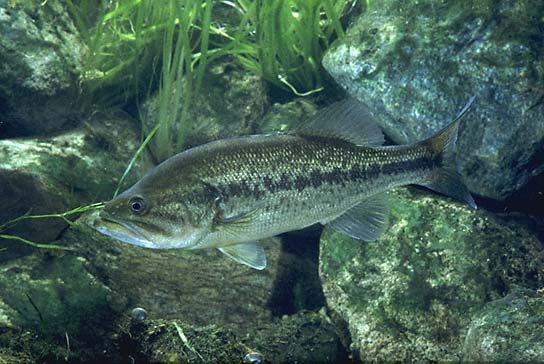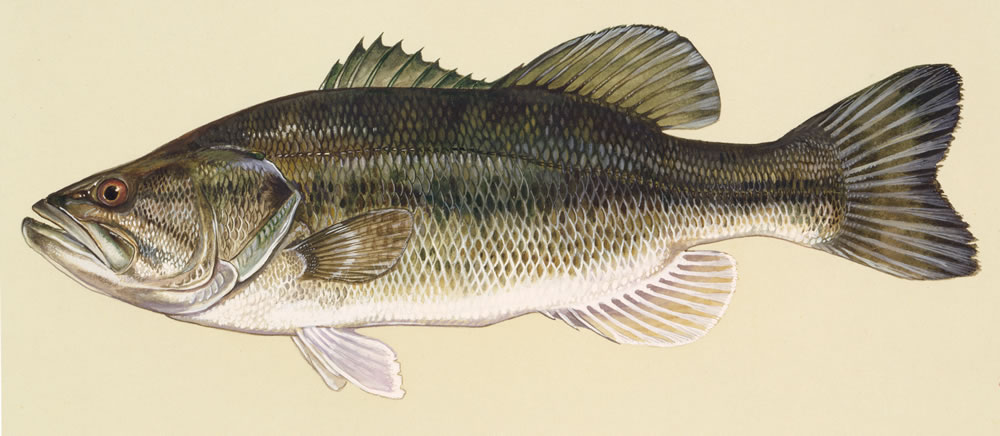
Micropterus salmoides
FAMILY
Centrarchidae
TAXONOMY
Micropterus salmoides Lacepиde, 1802, Carolinas, United States.
Two subspecies are recognized.
OTHER COMMON NAMES
English: Green bass, largemouth black bass, northern largemouth
bass; French: Achiganа grande bouche; German: Forellenbarsch;
Spanish: Huro, lobina negra.
PHYSICAL CHARACTERISTICS
Maximum total length 38 in (97 cm). About one-third as wide
as long, distinguished in part by a deeply cut dorsal fin. Differs
from its relative the smallmouth bass (M. dolomieui) by its lack
of horizontal striping on the head, the presence of a dark horizontal
stripe on each side of the body instead of vertical banding,
and a maxillary that reaches just past the eye.
DISTRIBUTION
North America from the Great Lakes east to the Atlantic coast,
and from Lake Winnipeg south to northern Mexico. Also
widely introduced throughout the United States and around
the world, including Europe, South America, and Africa.
HABITAT
Freshwater fish, prefers lakes, ponds, swamps, and river/stream
backwaters with considerable hiding places, including thick
vegetation or rocky structures.
BEHAVIOR
Juveniles school, but adults are solitary animals that remain
near cover, such as logs or heavy vegetation and seldom venture
into waters deeper than 20 ft (6 m).
FEEDING ECOLOGY AND DIET
Diurnal feeder on crustaceans and other invertebrates, also fishes.
REPRODUCTIVE BIOLOGY
Spawns in the late spring and early summer. The male becomes
territorial and makes depressions in the substrate of
weedy areas to serve as nests. A single female may lay eggs
over several nests. Both males and females provide parental
care, and have been known to guard the eggs and young for up
to a month after hatching. Parental care continues as long as
the young fishes remain schooled.
CONSERVATION STATUS
Not threatened.
SIGNIFICANCE TO HUMANS
Part of a large, popular fishing industry in the United States
and Canada.
Other popular Animals
Photo Gallery of - Largemouth bass





 Animalia Life
Animalia Life